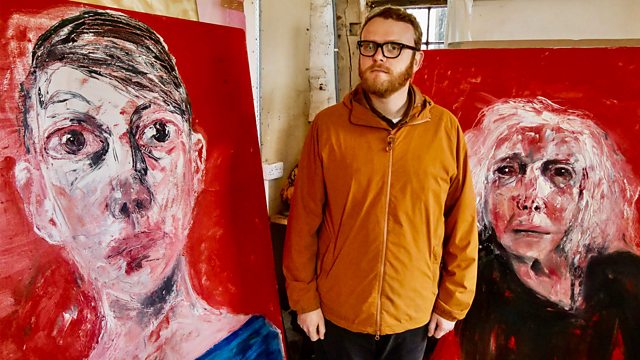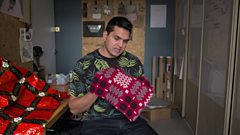
Episode 3
Huw Stephens looks at how, as the 20th century dawned, artists found radical new ways to depict Wales, pushing themselves to extremes and redefining what art could be.
In this final episode, Huw Stephens’s journey begins at the dawn of the 20th century with the artists who broke with tradition and depicted Wales in radical new ways. In Snowdonia, he learns how Augustus John and JD Innes led the way, obsessively painting the landscape with a freedom and vibrancy that still dazzles today. Equally bold was the output of Gwen John, whose work is in complete contrast to that of her brother Augustus. At the National Museum Wales in Cardiff, Huw discovers how she used light and tone to paint delicate and hypnotic portraits and interior scenes.
Between the wars, industrial south Wales produced some of the most powerful art of the century. Huw discovers how the work of Evan Walters and Cedric Morris is steeped in their experience of mining communities and the desperate poverty they endured. The lives of striking miners were rarely reflected in art, but Walters’s 1926 portrait of his friend William Hopkins captured his subject with dignity and honesty.
Travelling north, Huw heads out to Bardsey Island off the Llyn Peninsula, a place he first visited as a teenager. The landscape of Wales has long been a source of inspiration for artists and in the 1940s Brenda Chamberlain moved to Bardsey to immerse herself in its isolation. Inside the picturesque cottage where she lived, Huw sees her sketches of island life that she drew on the walls ‘as if they were a giant sketchbook’. At the same time, Kyffin Williams was painting the distinctive, dramatic landscapes of north Wales, establishing himself as the most popular Welsh artist of the 20th century.
Contemporary art in Wales reflects a post-devolution self-confidence that allows it to look both back and forward. In Swansea, Huw meets Daniel Trivedy and learns how his award-winning work Welsh Emergency Blanket took the patterns of traditional Welsh blankets and printed them on to the silver foil coverings given to refugees rescued from the sea. For his final stop, Huw visits Colwyn Bay where he meets internationally renowned artist Bedwyr Williams, whose work draws heavily on Welsh art history using humour and irreverence. It is a unique history, Bedwyr concludes, and one that makes him excited to be living and working in north Wales.
Last on
More episodes
Previous
Next
You are at the last episode
Clip
-
![]()
Welsh Foil Blankets
Duration: 02:40
Music Played
Timings (where shown) are from the start of the programme in hours and minutes
-
![]() 00:24
00:24Luke Richards
Last Man On Earth
Credits
| Role | Contributor |
|---|---|
| Presenter | Huw Stephens |
| Series Producer | Ian Michael Jones |
| Executive Producer | Judith Winnan |
| Producer | Steve Freer |
| Production Company | Wildflame Productions UK |
Broadcasts
- Mon 15 Mar 2021 21:00
- Tue 16 Mar 2021 02:55
- Thu 18 Mar 2021 23:15
- Sun 21 Mar 2021 18:00�������� Two Wales HD & Wales only
- Sun 8 Aug 2021 20:00�������� Two Wales HD & Wales only
- Sun 12 Jun 2022 17:10�������� Two Wales HD & Wales only
- Wed 15 Jun 2022 20:00
- Thu 16 Jun 2022 01:55
- Tue 28 Feb 2023 00:00
- Sun 5 Mar 2023 02:20
- Tue 19 Mar 2024 00:00


